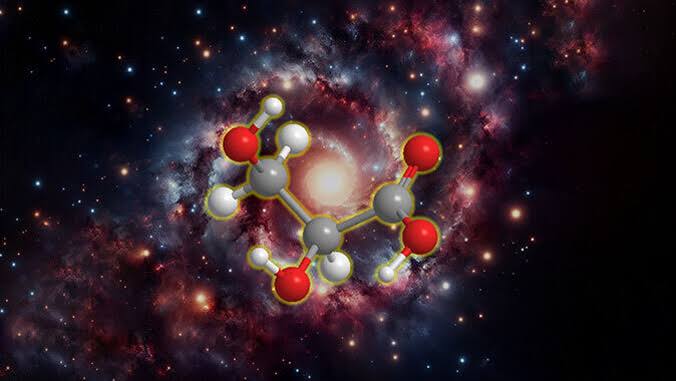Glyceric Acid Found to Form in Deep Space, Paving the Way for Life’s Origins

The recent research suggesting the formation of glyceric acid in deep space sheds light on the complex chemistry occurring in interstellar clouds and offers insights into the potential origins of crucial organic molecules necessary for life. This analysis, based on calculations and lab experiments, proposes that glyceric acid may arise from the radiation-induced interaction between carbon dioxide and ethylene glycol.
The significance of this finding lies in its implications for understanding the fundamental processes underlying the formation of organic compounds in space. Glyceric acid, known for its role in cell metabolism, energy balance, and photosynthesis, is a building block for more complex molecules essential for life. Its presence in meteorites and the theoretical possibility of its formation in interstellar clouds suggest that these regions could serve as cosmic chemical factories, synthesizing organic molecules crucial for the emergence of life.
Astronomers have long speculated about the formation of organic compounds in space, and this study provides compelling evidence supporting the hypothesis that such compounds can indeed form under the extreme conditions prevalent in interstellar environments. By combining computer simulations with laboratory experiments, researchers have demonstrated a plausible pathway for the production of glyceric acid, offering a glimpse into the intricate chemistry occurring in cosmic regions.
The research underscores the importance of interdisciplinary collaboration between astronomers and chemists in unraveling the mysteries of astrochemistry. While telescope observations provide valuable insights into the composition of interstellar clouds, laboratory experiments offer crucial data on the chemical processes occurring in simulated space environments. Together, these approaches enable scientists to better understand the origins of organic molecules and their role in the cosmic evolution of life.
Moving forward, the study suggests avenues for future research, including the search for glyceric acid in interstellar clouds using advanced astronomical observatories like the Atacama Large Millimeter/submillimeter Array (ALMA). By further exploring the chemical makeup of cosmic environments, scientists aim to deepen our understanding of the cosmic origins of life and the potential habitability of distant worlds.

